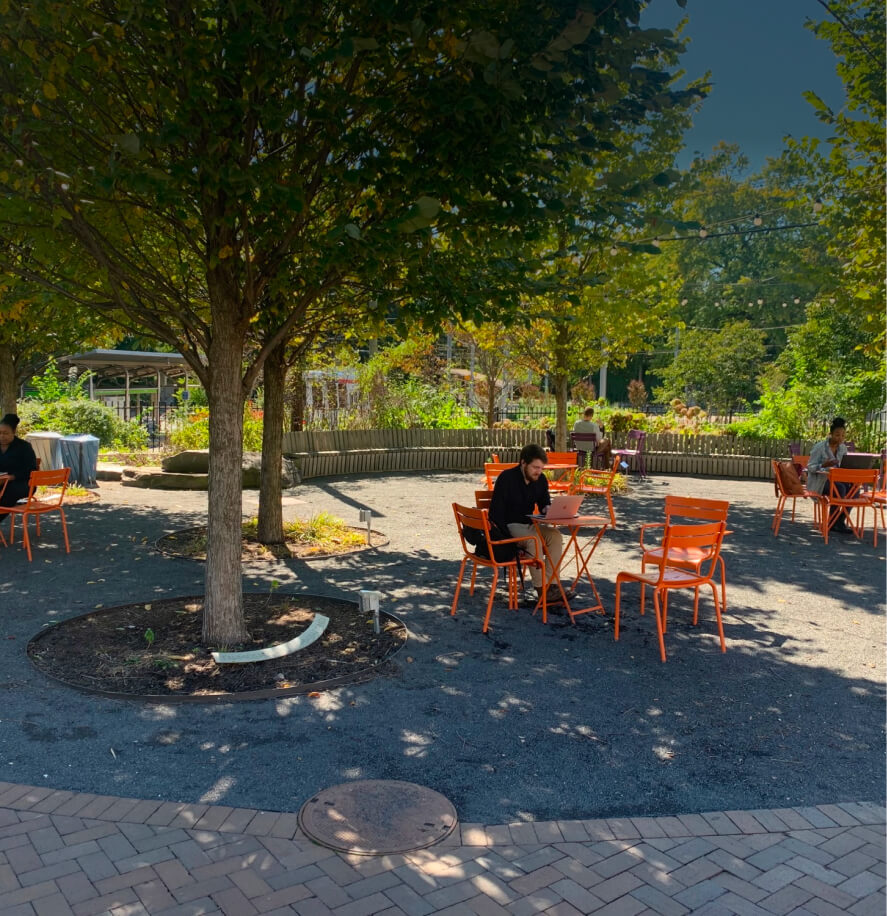-
Things to Do
Discover everything to do in University City.
-
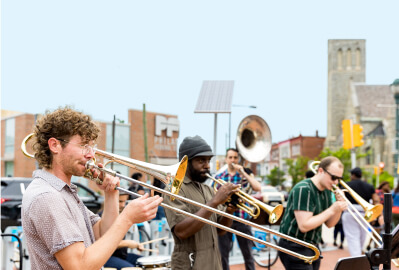 Community CalendarEvents including restaurants promotions, concerts, live theater, community meetings, art galleries & public spaces
Community CalendarEvents including restaurants promotions, concerts, live theater, community meetings, art galleries & public spaces -
 University City Dining DaysUniversity City’s version of “restaurant week”
University City Dining DaysUniversity City’s version of “restaurant week” -
 Baltimore Avenue Dollar Stroll$1, $3, and $5 deals from local businesses & vendors
Baltimore Avenue Dollar Stroll$1, $3, and $5 deals from local businesses & vendors -
 Movies in Clark ParkFamily-friendly free outdoor screenings every August
Movies in Clark ParkFamily-friendly free outdoor screenings every August
- About the Neighborhood
Learn More About our Thriving Neighborhood.-
Neighborhood OverviewUniversity City is Philadelphia’s academic heart, a hub for innovation & scientific discovery, and a historic neighborhood full of artistic & cultural exploration.
-
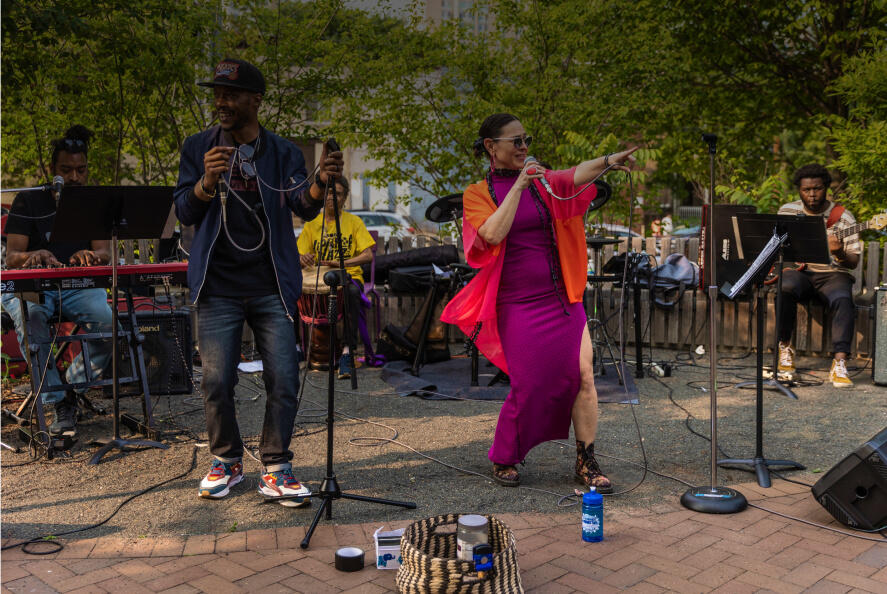 Neighborhood SpotlightsExplore top food, art, shopping, and culture, just minutes from Center City.
Neighborhood SpotlightsExplore top food, art, shopping, and culture, just minutes from Center City. -
 Latest NewsUpdated on UCD's work and the neighborhood.
Latest NewsUpdated on UCD's work and the neighborhood.
- Doing Business
Learn How we Promote Growth and Innovation.-
 Choose University CityUniversity City is a top Philadelphia neighborhood to work, live, attend school, open a business, or visit.
Choose University CityUniversity City is a top Philadelphia neighborhood to work, live, attend school, open a business, or visit. -
Reports and DataResearch & analysis tied to the local economy, transportation, public space use, public safety, workforce development, & more.
-
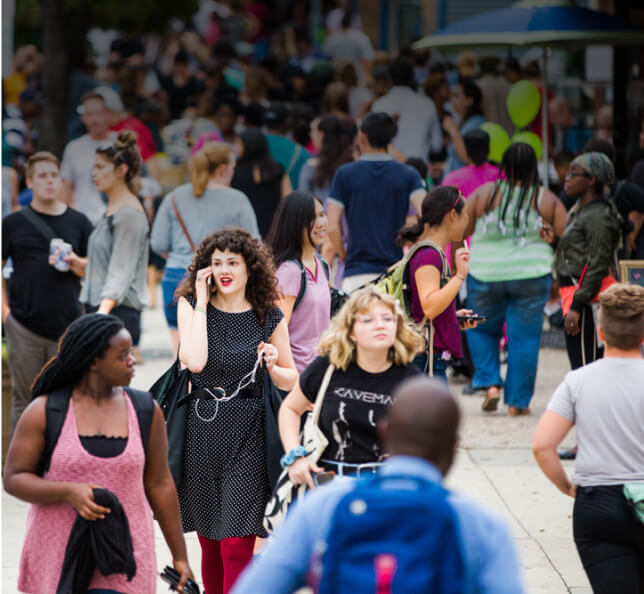 Become a SponsorSponsorships provide valuable visibility while fostering community engagement, and enhancing the vibrancy of the neighborhood.
Become a SponsorSponsorships provide valuable visibility while fostering community engagement, and enhancing the vibrancy of the neighborhood.
- What We Do
Explore our Range of Services and Specialties.-
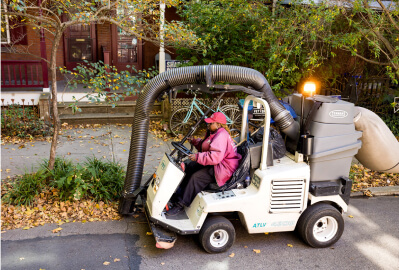 Maintain Clean and Safe StreetsCreating a safe and welcoming environment for residents, employees, students, and visitors
Maintain Clean and Safe StreetsCreating a safe and welcoming environment for residents, employees, students, and visitors -
 Assist the UnhousedAddressing the tragedy of homelessness in our district through a compassionate, measured & people-first approach
Assist the UnhousedAddressing the tragedy of homelessness in our district through a compassionate, measured & people-first approach -
 Improve TransportationAddressing bike & pedestrian safety, traffic congestion & public transit routing
Improve TransportationAddressing bike & pedestrian safety, traffic congestion & public transit routing -
 Support Our Local EconomySupporting supports the local business community and residents through a wide range of services
Support Our Local EconomySupporting supports the local business community and residents through a wide range of services -
 Provide Landscape ServicesOur landscaping social venture provides design-build-maintenance landscaping services
Provide Landscape ServicesOur landscaping social venture provides design-build-maintenance landscaping services -
 Connect Residents to CareersHarnessing the hiring power of our area’s major employers while cultivating local talent
Connect Residents to CareersHarnessing the hiring power of our area’s major employers while cultivating local talent
-

-
Things to Do
Discover everything to do in University City.
-
Community CalendarEvents including restaurants promotions, concerts, live theater, community meetings, art galleries & public spaces
-
University City Dining DaysUniversity City’s version of “restaurant week”
-
Baltimore Avenue Dollar Stroll$1, $3, and $5 deals from local businesses & vendors
-
Movies in Clark ParkFamily-friendly free outdoor screenings every August
- About the Neighborhood
Learn More About our Thriving Neighborhood.-
Neighborhood OverviewUniversity City is Philadelphia’s academic heart, a hub for innovation & scientific discovery, and a historic neighborhood full of artistic & cultural exploration.
-
Neighborhood SpotlightsExplore top food, art, shopping, and culture, just minutes from Center City.
-
Latest NewsUpdated on UCD's work and the neighborhood.
- Doing Business
Learn How we Promote Growth and Innovation.-
Choose University CityUniversity City is a top Philadelphia neighborhood to work, live, attend school, open a business, or visit.
-
Reports and DataResearch & analysis tied to the local economy, transportation, public space use, public safety, workforce development, & more.
-
Become a SponsorSponsorships provide valuable visibility while fostering community engagement, and enhancing the vibrancy of the neighborhood.
- What We Do
Explore our Range of Services and Specialties.-
Maintain Clean and Safe StreetsCreating a safe and welcoming environment for residents, employees, students, and visitors
-
Assist the UnhousedAddressing the tragedy of homelessness in our district through a compassionate, measured & people-first approach
-
Improve TransportationAddressing bike & pedestrian safety, traffic congestion & public transit routing
-
Support Our Local EconomySupporting supports the local business community and residents through a wide range of services
-
Provide Landscape ServicesOur landscaping social venture provides design-build-maintenance landscaping services
-
Connect Residents to CareersHarnessing the hiring power of our area’s major employers while cultivating local talent
UCD Analysis: SEPTA’s Proposed Service Cuts Would be Devastating to University City

As we’re sure you’re aware, our longtime partners at SEPTA are facing a significant funding crisis that could lead to dramatic service cuts and fare hikes throughout the region. The proposed cuts in service would be devastating for the entire system, and University City would be among the many neighborhoods hit hard by the proposed cuts. Our researchers have taken a deeper look at just how these cuts would impact our neighborhood.
The dramatic transformation of University City would not be possible without a comprehensive transit network, with SEPTA at the center
Now home to 85,000 jobs, University City has seen incredible growth and change over the past three decades, driven by large-scale investments in education, life sciences, and healthcare. The importance of University City, here defined as the area between Spring Garden and Woodland Avenue from the Schuylkill River to 50th Street, continues to grow stronger, with the highest ever share of jobs citywide (12.6%, up from 8.9% in 2002). Job postings continue to show demand and growth, with 17,000 unique listings by the largest employers in University City in 2024, up 250% since 2014 and 12% since 2019 (Source: Lightcast).
While the economic impact of University City has grown, so too has its population and density. Over 8,000 new units of multi-family housing have been built in the area since 2002, while the overall population has grown from 47,000 in 2000 to over 53,000 per the latest American Community Survey estimate. Demographic changes reflect that University City is becoming more attractive to young and mid-career professionals; the share of residents between the ages of 25-44 has grown from 29.5% in 2010 to 37.8% in 2023.
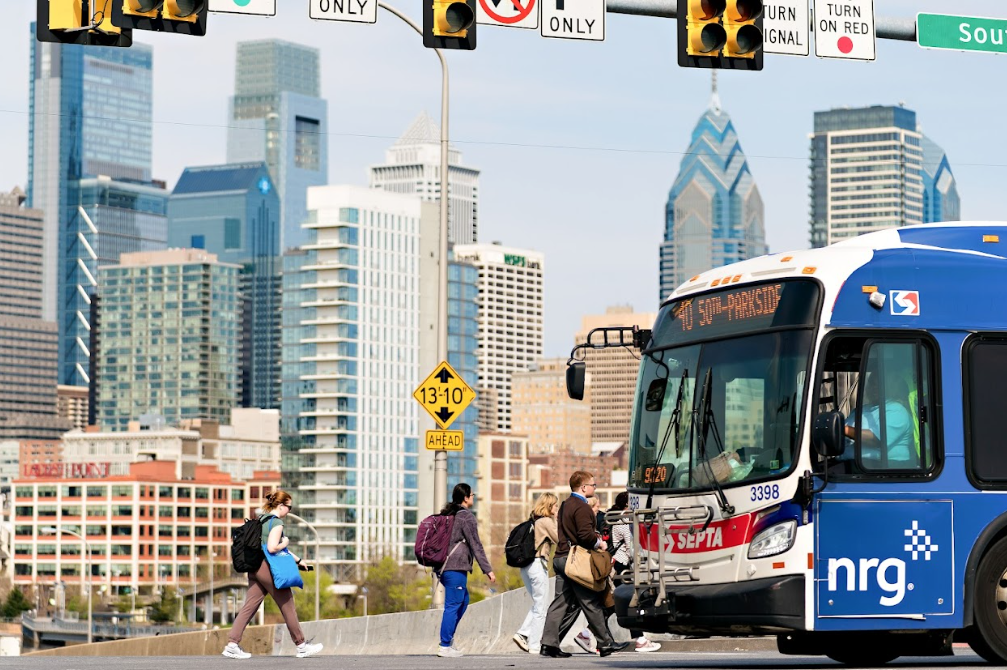
The growth of University City would not be possible without dense development and land use patterns. Owing to the historic street grid University City has inherited, new development has allowed for excellent walkability, bikeability, and accessibility via public transportation. The area is served by seventeen bus routes, five trolley lines, and all thirteen Regional Rail routes provided by SEPTA. Among residents of University City who commute to work, 24% use public transportation, which is higher than the citywide average of 20% and significantly higher than the national average of 4%.
Without increased funding, the proposed service cuts to SEPTA threaten all aspects of life in University City, including hospital operations
The public transportation engine of University City is under threat; SEPTA’s budget crisis, driven by the state Senate’s delay in passing a comprehensive funding plan for mass transit, would force the transit agency to cut overall service by 45% and raise fares by more than 20%.
On the average weekday, over 55,000 trips on a SEPTA bus or trolley start or end in University City. If service cuts are implemented this August as planned, Routes 30 and 31 would be eliminated, while the remaining bus and trolley routes would see up to a 20% reduction in service frequency. In January 2026, Route 44 would be eliminated, while the T1 Trolley (Route 10) would be converted to a bus, losing its tunneled connection to Center City, significantly hindering reliability and speed.
While SEPTA does not publish detailed ridership data for the L1 (Market Frankfort Line) or Regional Rail, service cuts would impact 52,700 riders region-wide in August 2025 and a further 75,700 riders region-wide in January 2026. Proposed changes to take place in August include a 20% reduction of all SEPTA Metro (includes L1 and B (Broad Street Line)) and Regional Rail service. In January 2026, five Regional Rail lines would be eliminated, including the Wilmington/Newark line, which directly serves Penn Medicine Station, while service on all remaining Metro and Regional Rail lines would end at 9PM.
LUCY (Loop Around University City), a bus service run by SEPTA in coordination with University City District and local partners, will not be affected by service cuts directly. However, the drastic overall reduction in SEPTA service would make this route, which operates primarily as a way for those on the L1 or Regional Rail to travel to their final destination within University City, a significantly less competitive transit option.

These service cuts would have a devastating impact on everyone who works in, lives in, or enjoys University City. Reduction in service frequency and elimination of routes would make it harder for thousands of people across the region to access healthcare, pursue employment opportunities, or visit loved ones. The 9PM service cutoff on rail routes would severely impact those who need to get around our neighborhood at night, including patrons of local bars and restaurants, healthcare workers at local hospitals, and visitors. A study by Econsult Solutions estimates that roughly 1 in 6 nighttime healthcare workers across the city rely on SEPTA for their commute, with wages worth $178 million (approximately 17% of the total nighttime wages), with much of that workforce concentrated in University City.
Per the latest data from Streetlight, University City currently sees over 190,000 car trips that start or end in the area on an average weekday. Econsult Solutions estimates that region-wide, 84% of lost transit trips will be replaced by private auto trips, a dire scenario in which gridlock could threaten business vitality and hospital operations. The Streetlight figure excludes trips that only pass through University City, going between Center City and destinations west, north, and south, trips which also significantly adds to local congestion.
Public transit is essential to University City and the greater Philadelphia region.
Increased congestion within this 2.4-square-mile area could become a serious bottleneck—not only stifling growth but also posing risks to small businesses, hospital operations, and patient well-being. University City District, in collaboration with its partners, strongly supports SEPTA as a critical service for our institutions, hospitals, businesses, students, and workforce.
You can find the latest information on SEPTA’s service cuts here. If you’d like to discuss the findings in this report, please email Joe Dizenhuz, Manager of Research and Analysis.
-
